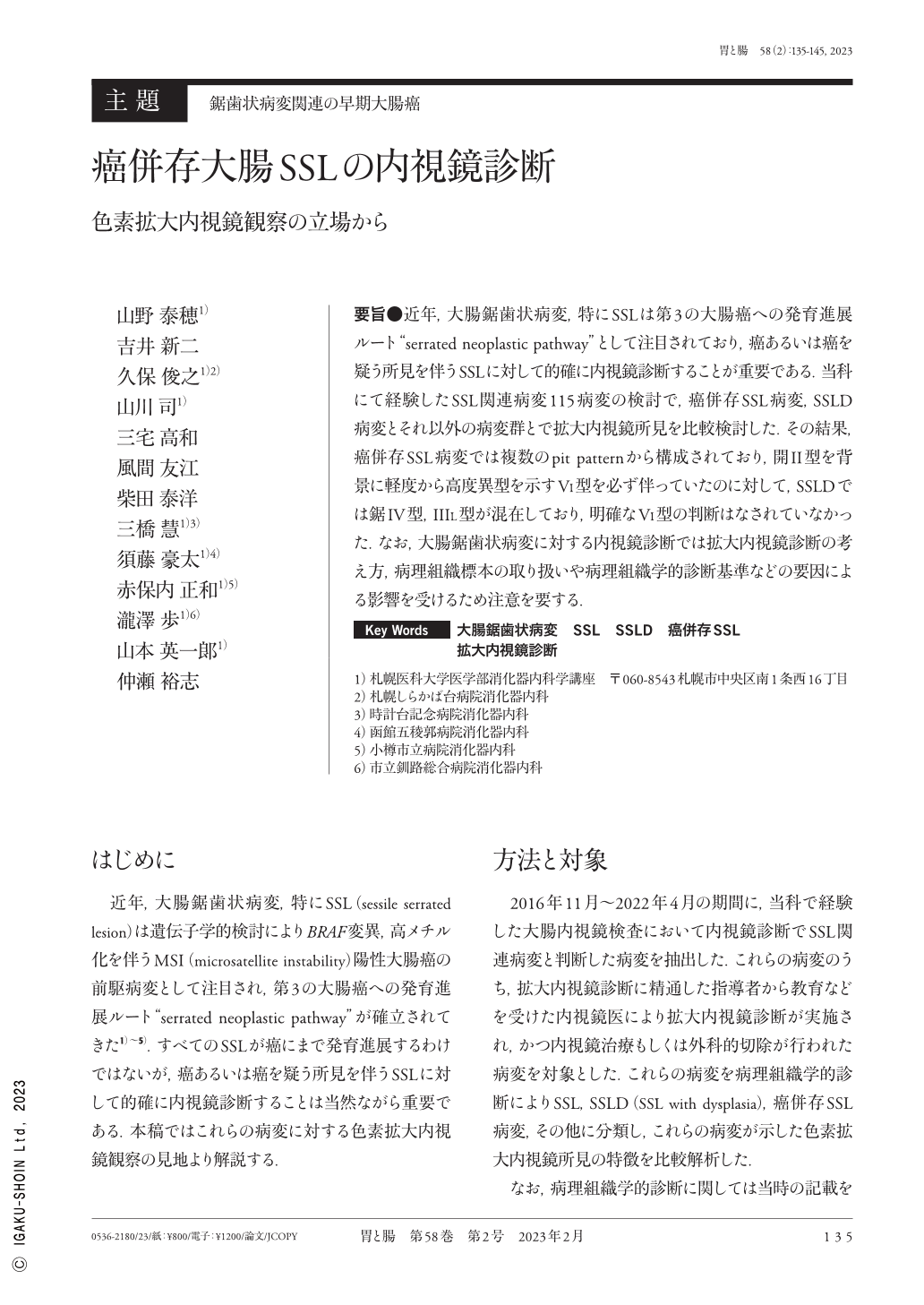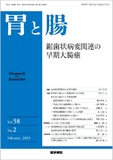Japanese
English
- 有料閲覧
- Abstract 文献概要
- 1ページ目 Look Inside
- 参考文献 Reference
- サイト内被引用 Cited by
要旨●近年,大腸鋸歯状病変,特にSSLは第3の大腸癌への発育進展ルート“serrated neoplastic pathway”として注目されており,癌あるいは癌を疑う所見を伴うSSLに対して的確に内視鏡診断することが重要である.当科にて経験したSSL関連病変115病変の検討で,癌併存SSL病変,SSLD病変とそれ以外の病変群とで拡大内視鏡所見を比較検討した.その結果,癌併存SSL病変では複数のpit patternから構成されており,開II型を背景に軽度から高度異型を示すVI型を必ず伴っていたのに対して,SSLDでは鋸IV型,IIIL型が混在しており,明確なVI型の判断はなされていなかった.なお,大腸鋸歯状病変に対する内視鏡診断では拡大内視鏡診断の考え方,病理組織標本の取り扱いや病理組織学的診断基準などの要因による影響を受けるため注意を要する.
Recently, colorectal serrated lesions, particularly SSLs(sessile serrated lesions), have attracted attention as the third growth and precursor lesion for colorectal cancer, called “serrated neoplastic pathway.” An accurate endoscopic diagnosis of SSL with cancer or documentation of suspicious findings is important. In this study, 115 SSL-related lesions were classified into cancer with/in SSL lesions, SSLD(SSL with dysplasia)lesions, and other lesion groups, and magnifying endoscopy findings in these lesion groups were compared. The findings revealed that cancer with/in SSL lesions were characterized by multiple pit patterns and were often associated with type VI lesions showing mild to severe atypia against the background of type II-open serrated lesion.
Conversely, SSLD was a mixture of serrated types IV and IIIL, and a clear distinction of type VI was not performed. In the endoscopic diagnosis of colorectal serrated lesions, the influence of factors, such as the concept of the magnifying endoscopic diagnosis, handling of histopathological specimens, and histopathological diagnostic criteria, should be considered.

Copyright © 2023, Igaku-Shoin Ltd. All rights reserved.


